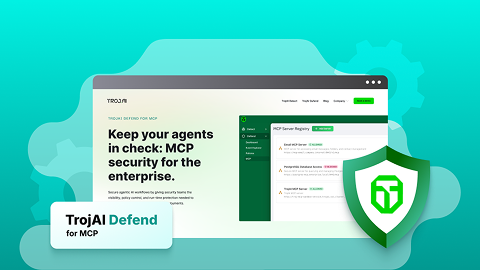A new language for AI
GenAI adoption is becoming more widespread in the enterprise. As a result, we are seeing a growing complexity of AI models and systems. LLM use is evolving into the next iteration of AI innovation: autonomous agents capable of learning, reasoning, and acting independently.
With all this new agency comes a big problem: How do models speak the same language as tools, data sources, other models, and users?
This is where Model Context Protocol (MCP) comes into play.
Model Context Protocol defined
Model Context Protocol (MCP) is an open standard that allows AI models to interact with tools, APIs, and memory in a structured, controlled way. It standardizes the format for function calls, tool usage, memory, and state. MCP promises to eliminate the need for custom integrations for each new data source. However, in practice today, many tools still require custom adapter layers or mappings, especially for proprietary or internal APIs.
Think of MCP as a coordination layer that sits between models and their environment to facilitate communication. If interoperability is the key to operational AI, MCP could be thought of as the universal translator that gets everyone speaking the same language.
Importantly, MCP is vendor neutral and open source. Though it was initially introduced by Anthropic, it is now a collaborative effort with a growing community and increasing industry adoption. Key players like Microsoft, Google, OpenAI, and Anthropic are aligning around shared patterns for tool use and structured context. This widespread adoption means that MCP is likely to become a universal standard for AI system connectivity.
The benefits of using MCP
The promise of MCP includes benefits such as improved interoperability, security, and traceability. Let’s take a more in-depth look at how MCP can help you.
Improved relevance and accuracy
MCP promises accurate, context-aware responses. It does this by helping models stay anchored in the right context, reducing hallucinations and increasing factuality. By explicitly managing context like documents, chats, or user instructions, the AI model is more likely to:
- Answer questions based on your specific documents or data
- Avoid straying into unrelated or incorrect information
- Maintain long-term coherence in multi-turn interactions
Better access control and auditing
MCP helps define clear boundaries for what the model knows and why. This enables the following functionality:
- Explicit permissioning of data such as who shared what, when, and with what access
- Easier compliance with data governance or privacy rules
- Traceability for decisions or outputs, like audit trails of context used
These benefits are critical in highly regulated industries like finance, healthcare, or government.
Stateful and memory-aware interactions
By maintaining a structured conversation memory, MCP allows models to recall earlier parts of a conversation or previously set instructions. This allows the model to track tasks over time and personalize responses based on remembered preferences or roles.
Supporting more natural, continuous workflows is helpful in a broad range of use cases, including technical support, research, complex project planning, and more.
Foundation for tool use and agentic behavior
MCP is considered essential as enterprises begin to think about agentic AI use cases. Protocols like MCP lay the groundwork for tool-using agents. They do this by:
- Defining when, how, and why tools or APIs should be called
- Letting models reference documentation, rules, or workflows dynamically
- Providing clear context routing to support multi-agent systems
Modular architecture
MCP supports modular context injection. This means that developers can swap in updated documents or replace context sources mid-session, dynamically add more details as conversations evolve, and build reusable knowledge or task templates.
This pluggable, modular architecture is extremely helpful when building robust, flexible systems, especially in environments where the context changes often or is shared across teams. It makes context management scalable and maintainable, especially in enterprise applications.
Using MCP has many important benefits. If you're using AI in settings where accuracy, traceability, personalization, or tool integration matter, MCP is a big step toward making models both more useful and more trustworthy.
How does Model Context Protocol work?
MCP is not a model, a plugin, or a tool. It is a protocol for structuring, sharing, and governing the contextual information that models use to think, act, and respond.
So where does it fit into the AI stack?
MCP sits between the application layer and the model itself. It defines how context is packaged, persisted, and passed to the model, whether that context is user instructions, documents, prior messages, or tool usage history. It is the connective tissue that gives a model memory, grounding, and purpose within a given session or system.
Rather than relying on ad-hoc prompt stuffing or brittle fine-tuning, MCP provides a structured and auditable way to inject knowledge and state. It allows applications to dynamically assemble relevant context, attribute sources, apply access controls, and enable continuity across interactions. This makes models more accurate, more secure, and better aligned with user intent. All this is achieved without the need to retrain the model.
In essence, MCP turns stateless models into stateful, situationally aware assistants by managing the who, what, and why behind every prompt.
Why MCP matters for AI agents
As enterprises shift from passive LLMs to active agents, MCP will become an essential, foundational layer. To work effectively and safely, agents need autonomy, access to tools, memory, and security controls. MCP enables models to act with memory, context, and control in dynamic, multi-step workflows by creating structured, auditable interfaces between the model, the task, and the environment.
In a world without MCP, each agent-to-tool connection is a bespoke, brittle integration. For developers, custom code, fragile prompts, and implicit assumptions don’t scale. For security teams, every manual connection becomes a blind spot - difficult to observe, much harder to secure.
MCP changes the game by offering a standardized interface for context and action. The following benefits are achieved with MCP in place:
- Agents can understand and adapt to new services dynamically, without hardcoded instructions.
- Organizations can wrap complex internal APIs behind clean, declarative protocols, reducing surface area and simplifying development.
- Security and compliance improve through context-aware access control, observability, and boundary enforcement to ensure that agents act only with appropriate data, at appropriate times, for appropriate reasons.
For agentic AI workflows, MCP becomes the operating layer that enables modular, auditable, and interoperable AI ecosystems. It turns agents from handcrafted scripts into scalable, policy-aligned digital workers that are capable of collaborating, reasoning, and safely executing in live environments.
For enterprises building toward a future of agentic AI, MCP could be the framework that helps make it possible.
Standardization is the path to scalable AI
Without a common framework like MCP, enterprises risk building fragile AI systems with siloed integrations, opaque decision-making, and insecure agent behavior. Such fragmentation increases operational costs. Furthermore, vendor lock-in stifles flexibility, and the lack of transparency makes trust and governance difficult.
MCP offers a solution. It is the connective tissue for the emerging AI-powered enterprise, allowing models, tools, data, and users to work together in a shared, structured environment. It lets models not just reason, but act securely and scale safely.
Whether you’re building, buying, or securing AI agents, understanding MCP is essential when trying to scale AI systems.
How TrojAI can help
At TrojAI, we’re building security for AI to help organizations protect their GenAI deployments.
Our mission is to enable the secure rollout of AI in the enterprise. Our comprehensive security platform for AI protects AI models, applications, and agents. Our best-in-class platform empowers enterprises to safeguard AI systems both at build time and run time. TrojAI Detect automatically red teams AI models, safeguarding model behavior and delivering remediation guidance at build time. TrojAI Defend is our GenAI Runtime Defense solution that protects enterprises from threats in real time.
By assessing the risk of AI model behavior during the AI development lifecycle and protecting it at run time, we deliver comprehensive security for your AI models, applications, and agents.
Want to learn more about how TrojAI secures the world's largest enterprises with a highly scalable, performant, and extensible solution?
Check us out at troj.ai now.

.png)








